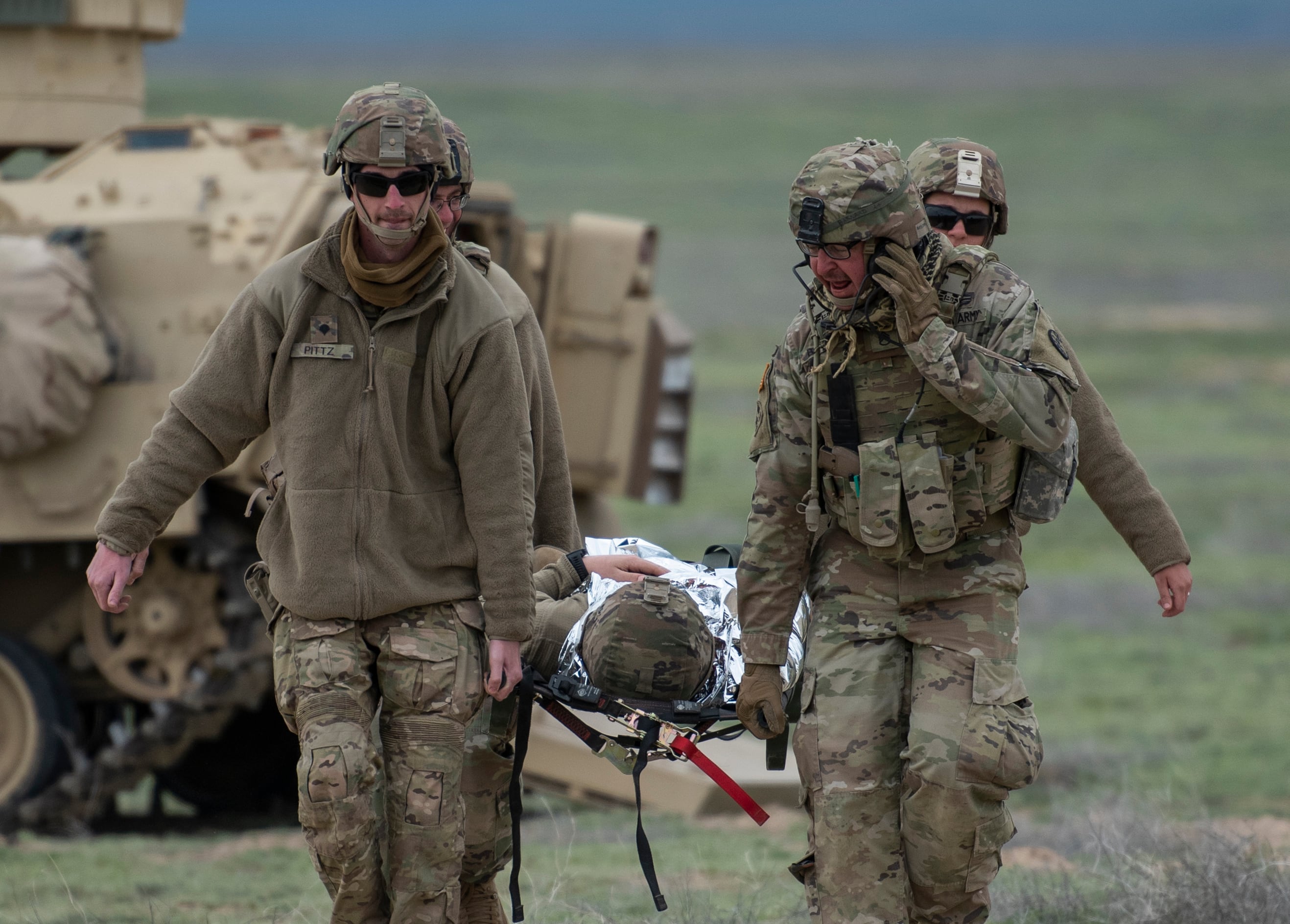Troops and their families are more concerned about time apart, and what that separation may mean for their children, than they are about pay and benefits, according to a new survey.
That’s a change from past findings by the Blue Star Families Military Family Lifestyle Survey: Pay and benefits had been the top concern every year since 2013.
Out of this year’s participants, 46 percent of spouses and 47 percent of active-duty service members expressed concerns about time apart. Four in 10 of those respondents said they’d experienced six or more months of family separation in the previous 18 months.
The results “indicate service members and their families are experiencing substantial difficulties balancing work and family,” according to the report’s analysis. “It is time for an updated understanding of military family support needs.”
This year, 7,891 people participated in the survey, including military spouses, active-duty service members, veterans, and their immediate family members. Of those participants, 57 percent were active-duty spouses and 7 percent were active-duty service members.
The survey was conducted by Blue Star Families in collaboration with Syracuse University’s Institute for Veterans and Military Families, and was accessed online in April and May.
“The Department of Defense must do a better job of incorporating military families into its current thinking and future planning,” the survey analysts noted in the report. “The all-volunteer force was not designed for our current security environment or the modern service member.
“Service members may be single parents, have professional spouses, or have children with special needs. Yet, many aspects of the military’s personnel and family support policies remain based on an outdated, draft-based military.”
‘WE KNOW OUR FAMILIES ARE CHANGING’
“The success in the future of the all-volunteer force is not guaranteed,” said Anthony Kurta, acting undersecretary of defense for personnel and readiness, at a panel discussion discussing the survey held at the Brookings Institution, a Washington, D.C.-based think tank.
“We know our families are changing,” he said, noting that family structures have changed over the last 40 or 50 years. “We also have to adapt to the nature of the threat.
“There are some warning signs. This survey every year points to those areas we have to work at to ensure that 20 years from now we can still field an all-volunteer force.”
Time away from families is one example; Kurta noted reports that sailors in the western Pacific were facing 100-hour work weeks.
“There’s no time with your family in a 100-hour work week,” he said. “Part of this is the challenge that we’re under. The force that we have generally is getting smaller and demands are rising. The fact is that people are just being tasked to do more in their time in their service.”
He noted one dark cloud on the horizon, according to the survey: Those currently serving are less likely to recommend military service to their children.
SURVEY SPECS
While military pay is one factor military families examine when deciding whether to stay or leave the military, it wasn’t the central concern this year, researchers noted.
Of the service members who participated in the survey, apart from retirement or separation because of medical reasons, 22 percent said they plan to leave the military within the next two years. Their top reasons for leaving the service were related to quality-of life-concerns: 30 percent cited concerns about the impact of military service on their families, and 25 percent said the military lifestyle doesn’t allow them enough time with their family.
For the first time in the eight-year history of the survey, military child education and the impact of deployment on children ranked among the top five concerns for both service members and military spouses. two-thirds of families said they couldn’t reliably find the child care they need, and 56 percent indicated the Defense Department doesn’t provide enough support to help children cope with the challenges of military life.
The survey was conducted primarily through national military and veteran service organizations, who spread the word to their own members and communities. It was not a random sampling and “cannot necessarily be considered a direct representation of the entire military family population,” the report’s authors noted.
Among other findings:
- Of those who indicated they were eligible to switch to the new Blended Retirement System, 51 percent said they don’t understand it, and 42 percent said they don’t know how the new system compares to the old benefit.
- 49 percent of survey participants have less than $5,000 in savings.
- 41 percent of military spouse survey participants reported they were currently earning less than half of their previous highest salary.
- 51 percent of military spouse survey participants who were employed earned less than $20,000 in 2016; the median income of all working women in the U.S. that year was $30,246.
- Military spouses, veterans and veteran spouses who participated in the survey reported higher prevalence of mental health challenges than the broader civilian population. About 16 percent of the general population has a diagnosis of depression, while 24 percent of military spouses reported they’d been diagnosed, as did 37 percent of veterans; and 32 percent of veteran spouses.
- The percentage of military families who would recommend military service to their children or other children continued to drop, reaching 40 percent this year compared with 43 percent in 2016 and 45 percent in 2015. This year, 55 percent said they would recommend service to another young person, down from 66 percent in 2016. Male service members and veterans are more likely to recommend service than their female counterparts.
Karen has covered military families, quality of life and consumer issues for Military Times for more than 30 years, and is co-author of a chapter on media coverage of military families in the book "A Battle Plan for Supporting Military Families." She previously worked for newspapers in Guam, Norfolk, Jacksonville, Fla., and Athens, Ga.




